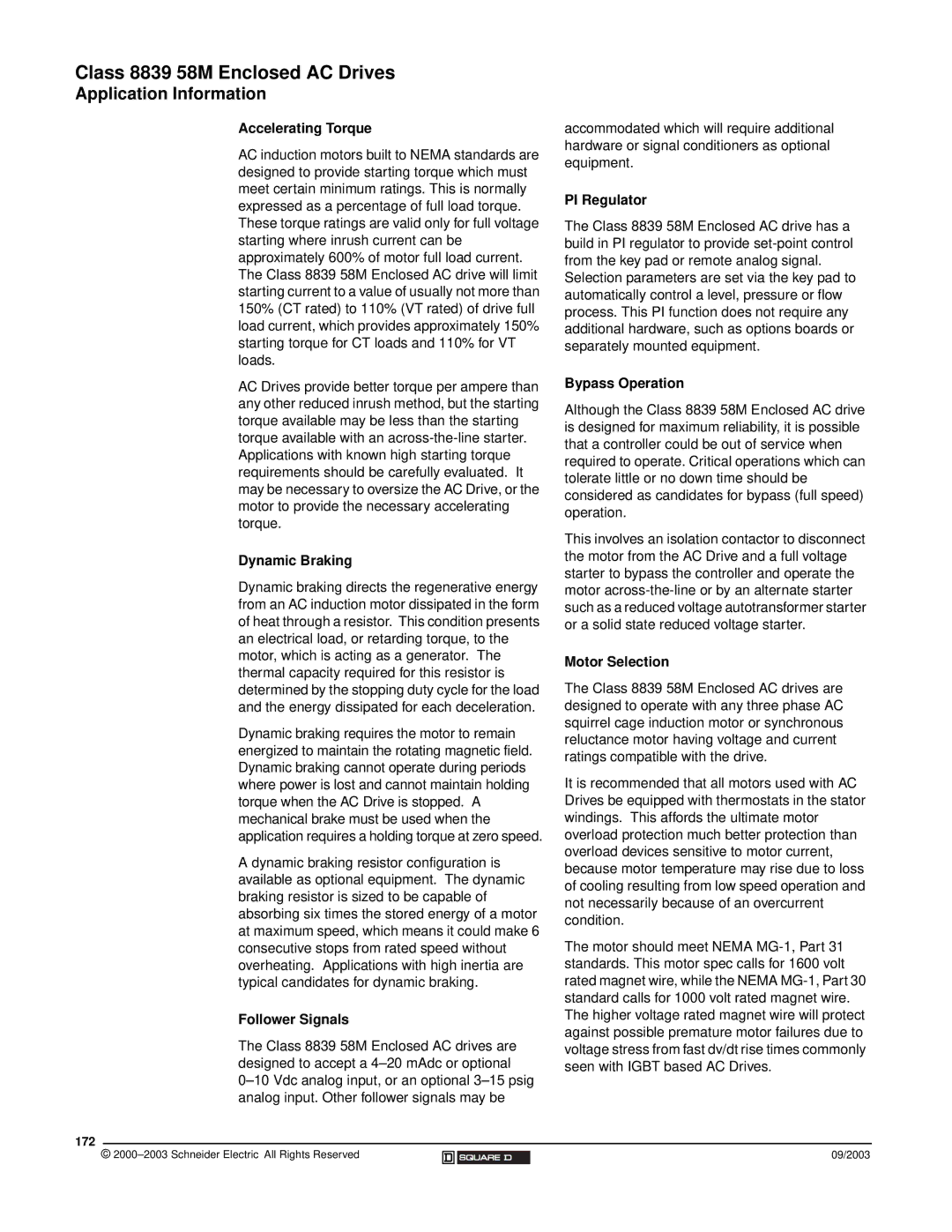Class 8839 58M Enclosed AC Drives
Application Information
Accelerating Torque
AC induction motors built to NEMA standards are designed to provide starting torque which must meet certain minimum ratings. This is normally expressed as a percentage of full load torque. These torque ratings are valid only for full voltage starting where inrush current can be approximately 600% of motor full load current. The Class 8839 58M Enclosed AC drive will limit starting current to a value of usually not more than 150% (CT rated) to 110% (VT rated) of drive full load current, which provides approximately 150% starting torque for CT loads and 110% for VT loads.
accommodated which will require additional hardware or signal conditioners as optional equipment.
PI Regulator
The Class 8839 58M Enclosed AC drive has a build in PI regulator to provide
Selection parameters are set via the key pad to automatically control a level, pressure or flow process. This PI function does not require any additional hardware, such as options boards or separately mounted equipment.
AC Drives provide better torque per ampere than any other reduced inrush method, but the starting torque available may be less than the starting torque available with an
Dynamic Braking
Dynamic braking directs the regenerative energy from an AC induction motor dissipated in the form of heat through a resistor. This condition presents an electrical load, or retarding torque, to the motor, which is acting as a generator. The thermal capacity required for this resistor is determined by the stopping duty cycle for the load and the energy dissipated for each deceleration.
Dynamic braking requires the motor to remain energized to maintain the rotating magnetic field. Dynamic braking cannot operate during periods where power is lost and cannot maintain holding torque when the AC Drive is stopped. A mechanical brake must be used when the application requires a holding torque at zero speed.
A dynamic braking resistor configuration is available as optional equipment. The dynamic braking resistor is sized to be capable of absorbing six times the stored energy of a motor at maximum speed, which means it could make 6 consecutive stops from rated speed without overheating. Applications with high inertia are typical candidates for dynamic braking.
Follower Signals
The Class 8839 58M Enclosed AC drives are designed to accept a
172
Bypass Operation
Although the Class 8839 58M Enclosed AC drive is designed for maximum reliability, it is possible that a controller could be out of service when required to operate. Critical operations which can tolerate little or no down time should be considered as candidates for bypass (full speed) operation.
This involves an isolation contactor to disconnect the motor from the AC Drive and a full voltage starter to bypass the controller and operate the motor
Motor Selection
The Class 8839 58M Enclosed AC drives are designed to operate with any three phase AC squirrel cage induction motor or synchronous reluctance motor having voltage and current ratings compatible with the drive.
It is recommended that all motors used with AC Drives be equipped with thermostats in the stator windings. This affords the ultimate motor overload protection much better protection than overload devices sensitive to motor current, because motor temperature may rise due to loss of cooling resulting from low speed operation and not necessarily because of an overcurrent condition.
The motor should meet NEMA
©
09/2003
